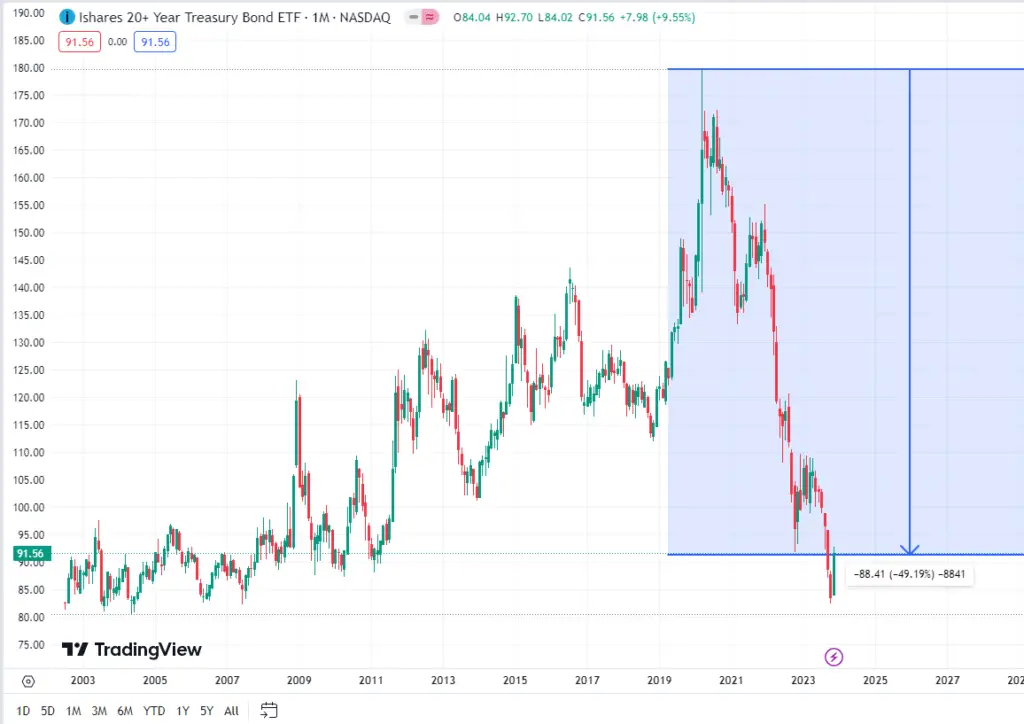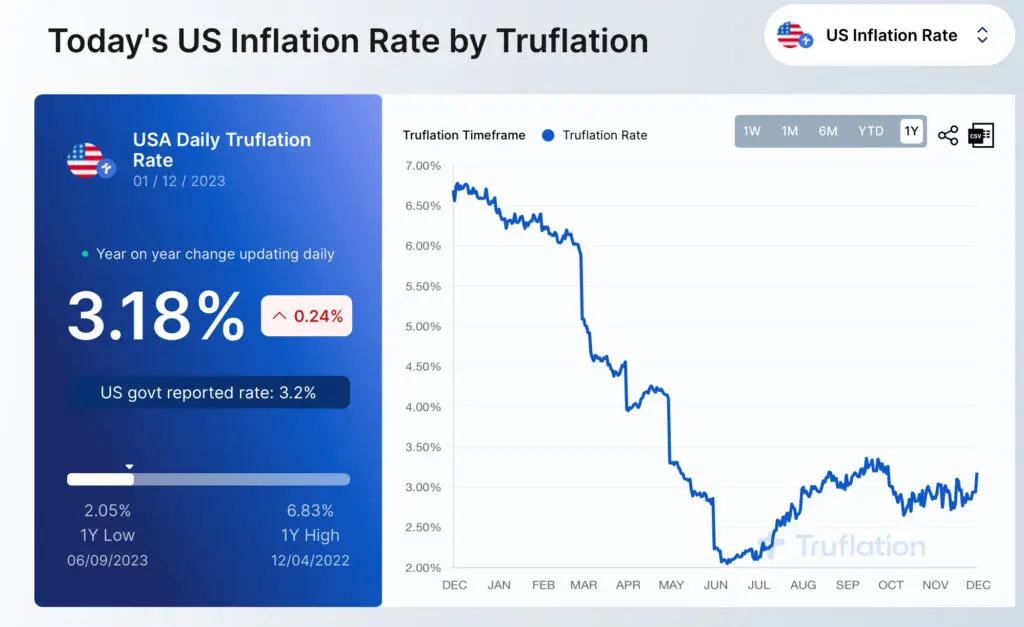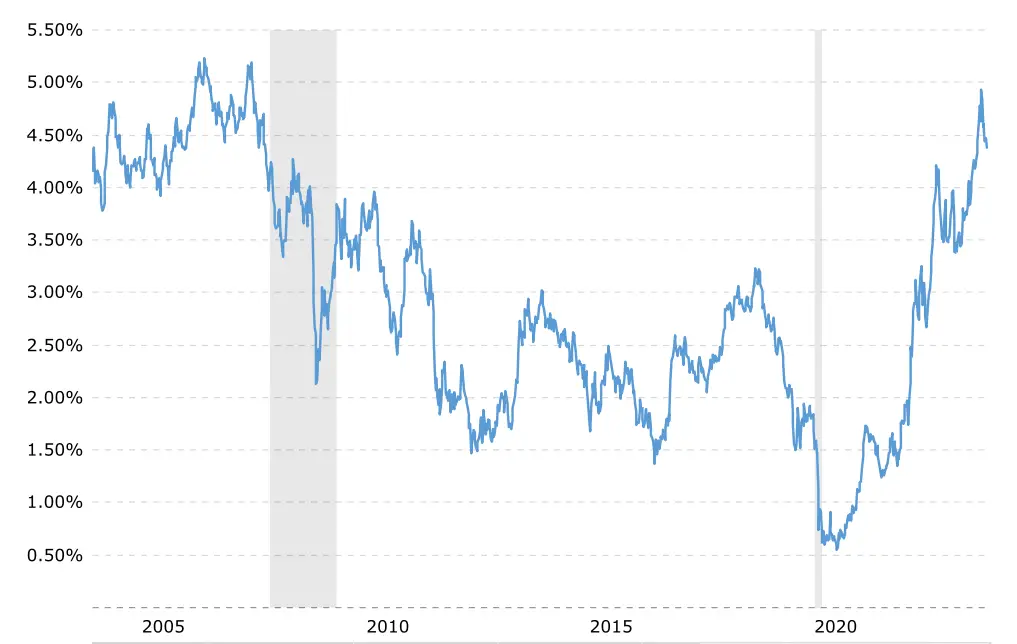As of December 2023, the investment community is buzzing about the potential of TLT as an investment opportunity. Let’s delve into what TLT entails
The iShares 20+ Year Treasury Bond ETF (TLT) gives investors targeted access to U.S. Treasury bonds with over twenty years to maturity. It aims to mirror the performance of the IDC US Treasury 20+ Year Index.
Pros Of Buying TLT
1. Buying Opportunity
At time of writing TLT has fallen 49% since all time high in 2021, which may represent a buying opportunity.

2. Potential for Future Appreciation
TLT’s value is closely tied to interest rates. A lot of people believed that interest rate has peaked, and the Feds will be cutting interest rates soon.
TLT, with an effective duration of 16.62 years, is sensitive to interest rate changes. A 1% decrease in interest rates can lead to approximately a 16.62% increase in TLT’s price, reflecting the bond’s price sensitivity to rate changes over its duration.
This high duration makes TLT more volatile in response to interest rate movements, which can lead to significant price appreciation, making it a potentially powerful tool for investors anticipating rate changes.
3. Diversification
TLT offers a way to diversify your portfolio away from stocks and other equity investments. It can serve as a hedge against equity investments during a recession. This is because government bonds often react differently to economic downturns compared to stocks.
In times of economic stress or recession, investors tend to move their assets into safer investments like Treasury bonds, driving up their prices. This inverse relationship between bond prices and stock market performance can help to offset losses in an equity portfolio, thus providing a balancing effect. Essentially, TLT can act as a stabilizer during turbulent economic periods.
4. Dividend Yield
TLT provides a source of income through its dividend yield. For investors seeking regular income streams, this can be an attractive feature. The yield can serve as a steady source of funds, which is particularly appealing in times of market volatility or uncertainty.
Cons Of Buying TLT
Investing in TLT, the iShares 20+ Year Treasury Bond ETF, comes with its own set of challenges and risks.
1. Interest Rates Risk
As interest rates rise, the value of TLT can decrease, given its focus on long-term Treasury bonds. This is especially relevant in a scenario where the Federal Reserve tightens monetary policy, leading to higher interest rates.
As mentioned above, with its effective duration of 16.62 years, a 1% rise in interest rate could lead to a potential loss of -16.62% in TLT’s price.
2. Quantitative Tightening Impact
The current economic environment, characterized by Quantitative Tightening (QT), could also impact TLT negatively.
QT involves the Federal Reserve reducing its holdings of government bonds. This reduction increases the supply of bonds in the market, as the Fed is no longer buying them in large quantities.
When bond supply increases without a corresponding rise in demand, prices typically fall. Since TLT tracks the price of long-term U.S. Treasury bonds, increased supply and lower bond prices due to QT can lead to a decline in TLT’s value.
3. Inflation Concerns
Inflation is another critical factor to consider. High inflation rates can erode the real returns of Treasury bonds. This is because the fixed interest payments lose purchasing power over time. Inflation reduces the value of these payments, making the bonds less attractive to investors seeking to maintain or grow the real value of their capital.
TLT, have a longer time horizon until maturity, meaning there’s more time for inflation to diminish the value of their fixed payments.
Should You Buy TLT (20+ Year Treasury Bond ETF) in 2023?
TLT with its recent significant price drop could signify a buying opportunity, especially if you anticipate a decline in interest rates. TLT offers portfolio diversification and a source of dividend income, beneficial during market instability.
Conversely, if you’re wary of rising interest rates, ongoing quantitative tightening, and high inflation, TLT might not align with your investment strategy.
My personal view is interest rate has most probably peaked, simply because we can see that inflation is starting to fallen from peak and seems to have stabilised.

However, looking at historical 10 year interest rates, I don’t think we would go back to the ultra low interest rate periods of 2020. A realistic rate would be between 2 to 3%.

This means that based on the effective duration calculation, we can see a gain of at least 30% based on the current price. That said, there is always a risk of QT oversupplying bonds in the market and dulling the value.
As always, it’s prudent to consider your personal financial situation, risk tolerance, and investment objectives before making any investment decisions.